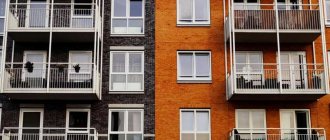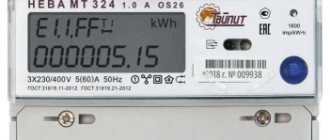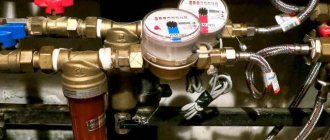The fire safety rules contain recommendations on how to maintain buildings and premises to ensure safety (RF RF dated April 25, 2012 No. 390). Fire safety measures are taken at the design and construction stages of a house.
A package of documents must be collected, which includes an explanatory note and diagrams, and there must also be a section that will reflect the list of measures to ensure fire safety (Article 48 of the Civil Code of the Russian Federation).
So, the house must be equipped with all fire safety engineering systems, which are regulated by regulatory documents: SP 112.13330.2011 “Fire safety of buildings and structures”; SP 4.13130.2013 “Fire protection systems. Limiting the spread of fire at protection facilities. Requirements for space-planning and design solutions"; NPB 110-03 “List of buildings, structures, premises and equipment subject to protection by automatic fire extinguishing installations and automatic fire alarms” and other regulations.
The person who was appointed responsible, and if there is no such person, then the head of the management organization is responsible for compliance with fire safety requirements. This obligation is regulated by Art. 38 of the Federal Law of December 21, 1994 of the Russian Federation No. 69-FZ.
Primary requirements
Fire protection measures are laid down at the design stage of a residential building. The responsibility to comply with fire safety rules during operation rests with residents and management organizations. Apartment owners are interested in the safety and protection of their property and must pay attention to compliance with fire safety rules on an equal basis with the management company.
In apartment buildings, fire safety requirements are regulated by Federal Law No. 384-FZ dated December 30, 2009. This regulation establishes general fire safety requirements and rules in buildings and regulates the content of:
- residential premises;
- escape routes;
- fire protection systems;
- courtyard area.
Building structural elements and fire resistance
A special feature of this type of construction is the wide range of materials used.
This includes various types of ready-made building structures made of concrete, and piece products, including blocks made of various composites, bricks, and masonry. Wooden structures, including logs, boards, timber, are also actively used in this type of construction. The choice of insulation materials is also varied. The interior finishing material of the room includes the following compositions:
- wooden elements, including lining, plywood, chipboard;
- finishing materials based on minerals, including basalt insulation, plasterboard, mineral fiber boards;
- various rolls and sheets for ceiling structures;
- finishing materials in the form of ceramic tiles, plaster mixtures, wallpaper rolls, floor coverings;
- rafter structures, represented by beams, sheathing, wooden slats;
- roofing materials can be either a flammable group or fire-resistant structures, for example, corrugated sheets or metal tiles.
There are three degrees of fire resistance of individual residential buildings, including: 1. Level 3 buildings
are based on enclosing fragments made of concrete, brick, and ceramic blocks.
If flammable materials were used as materials, then all of them must be subjected to fire retardant treatment. 2. Stage 4 buildings
are buildings whose structures are based on wood or metal elements, and non-combustible insulation increases the fire safety of the house.
3. Grade 5 structures
are 100% made of flammable, usually wooden structures. When constructing buildings of this type, timber or logs are usually used.
The most expensive development option is buildings of fire resistance class 3. This type is used in the construction of expensive settlements in suburban areas. Type 5 structures are most often used in villages and summer cottages. Buildings of fire resistance class 4 are most often constructed for use as special structures, for example, industrial or commercial purposes.
Instructions and rules
Responsibility for developing and creating fire safety instructions in apartment buildings (apartment buildings) lies with the building management company. The rules in the instructions must not contradict current legislation in the field of fire safety. The instructions are mandatory for employees of the management company or housing association servicing an apartment building.
For residents of apartment buildings, a set of fire safety rules is created, which is posted on the information stand. Every year, the management company or housing association must provide instructions to residents about the maintenance of apartments and fire safety rules.
The content of the instructions and rules are created based on the provisions of the “Fire Regulations in the Russian Federation”, which state that it is prohibited:
- storage of fire and explosive substances, furniture and other things on technical floors;
- organization of utility rooms on staircases;
- storage of furniture and storage of flammable materials under stairs;
- place stalls, kiosks, etc. in elevator halls;
- independent redevelopment and modernization of emergency exits and doors;
- cluttering and sealing of doors, hatches, passages in adjacent sections and exits to emergency staircases;
- cleaning premises using flammable liquids (solvent, etc.);
- heating pipes using open fire;
- output to the staircase of the outdoor unit of air conditioners;
- the use of homemade heaters or with a faulty (missing) thermostat;
- use of damaged electrical appliances;
- leaving electrical appliances connected to the network unattended (except for devices that must be in operation around the clock).
Compliance with the listed prohibitory points is mandatory for residents of apartment buildings and employees of the management company.
Violation of fire safety rules in residential apartment buildings increases the risk of fire and threatens to bring the perpetrator to administrative or criminal liability.
Federal Law No. 123-FZ (Technical Regulations) establishes requirements for the composition and functional characteristics of fire safety systems. Chapter 19 of this law regulates the requirements in all buildings and structures. When installing a fire safety system in an apartment building, you should follow the specified regulations.
Fire safety system
Each facility, including an apartment building, must have a fire safety system, which includes a fire prevention system, a fire protection system and a set of organizational and technical measures to ensure safety. The fire protection system must provide the ability to evacuate people to a safe area. The requirements for fire safety systems for apartment buildings are set out in detail in Chapter. 19 of the Federal Law of July 22, 2008 No. 123-FZ. When installing a fire safety system in an apartment building, you should focus specifically on this regulation. Fire protection systems and means include automatic fire extinguishing and alarm systems, installations of smoke protection systems, fire warning systems, fire alarm systems, internal fire water supply systems, fire doors, fire and smoke dampers, protective devices in fire barriers. All of them must be kept in good condition. At least once a quarter, it is necessary to check their performance and draw up an appropriate inspection report. Repair and maintenance of devices must be carried out in accordance with:
- annual schedule,
- timing of repair work.
Installation, maintenance and repair of fire safety equipment in accordance with Decree of the Government of the Russian Federation dated December 30, 2011 No. 1225 is carried out by an organization that has the appropriate license. The MA must enter into an agreement with such an organization. It is necessary to maintain the internal fire water supply in good condition and check it at least twice a year. You can do this in spring and autumn, during seasonal inspections of an apartment building. Internal fire water supply taps must be equipped with fire hoses, manual fire nozzles and valves, and the fire hose must be connected to the fire hydrant and fire nozzle. Fire hoses must be closed at least once a year, and fire cabinets must be placed on the wall so that their doors open at least 90 degrees. The MA must have as-built documentation for the installations and fire protection systems of the facility. Fire protection systems must be in automatic start mode. The number and type of fire extinguishers is selected depending on (Article 465 of the Russian Federation Regulations dated April 25, 2012 No. 390):
- categories of premises,
- fire extinguishing ability of the fire extinguisher,
- fire class.
Each fire extinguisher installed at a protection facility must have a manufacturer’s passport and a serial number (Article 475 of the Russian Federation Regulations dated April 25, 2012 No. 390).
The head of the organization must monitor the availability and serviceability of fire extinguishers. Inspection and inspection deadlines must also be observed, and fire extinguishers must be recharged in a timely manner.
There must be a separate journal for all this data (Article 478 of the Russian Federation Regulations dated April 25, 2012 No. 390).
If the building does not have an internal fire-fighting water supply and automatic fire extinguishing installations, then it must be equipped with fire shields, which are equipped depending on the type of shield and fire class: a crowbar, a bucket, a blanket to isolate the source of fire, a box with sand, etc. These fire extinguishing agents must not be used for other purposes.
Fire extinguishing equipment must be located so that it does not interfere with the evacuation of people in the event of a fire.
To understand how many primary fire extinguishing agents are needed, you need to determine the category of the building in terms of explosion and fire hazard. This should be done by a specialist.
Requirements for electrical installations
The fire safety system in the apartment building must ensure the evacuation of people before the maximum danger level in case of fire occurs.
The electrical wiring that ensures the operability of the fire alarm system, elevators, emergency ventilation, and emergency lighting of evacuation routes in case of fire must remain operational for the time required for the complete evacuation of residents.
Considering that apartment buildings are characterized by a large number of people living, their evacuation requires a long period of time. Therefore, increased requirements are placed on the fire resistance parameters of cables and electrical wiring.
Power supply lines in an apartment building must be equipped with residual current devices.
What innovations have affected facilities with large numbers of people?
If there is no standard defining the maximum permissible number of people in a room, you will have to proceed from the calculation of no more than 1 person per 1 sq. m. m.
During the exercises, it will be necessary to practice the evacuation of not only personnel, but also visitors.
Objects with a large presence of people must be equipped with hand-held electric flashlights, as well as PPE for respiratory and visual organs according to the same standards as facilities with round-the-clock presence of people - at least 1 flashlight and 1 PPE per person on duty. The integrity of PPE should be checked annually.
Boiler rooms built into buildings with large numbers of people or attached to such buildings are not allowed to be converted from solid fuel to liquid or gaseous.
Fire protection systems should not be turned off for maintenance or repairs if large crowded events are taking place at the same time.
Automatic fire extinguishing and warning systems
The technical regulations contain clear instructions on the requirements and equipment of automatic systems and fire alarms. An automatic fire extinguishing and alarm system is calculated during the design of buildings and installed during the construction phase.
Fire extinguishing systems in apartment buildings must ensure automatic detection of fire and transmission of a signal to the warning system and people control system during evacuation. The fire alarm must provide sound and light signals to the premises of the personnel on duty.
The placement of fire detectors must be such that a fire is detected in a timely manner in any room of an apartment building. Manual call points are installed on evacuation routes.
Notification of a fire and evacuation of residents must be carried out in one of the following ways (or a combination of them):
- giving light or sound signals;
- broadcasting warning texts about fires and evacuation routes;
- turning on emergency lighting;
- remote shutdown of emergency exit locks;
- other ways.
The alert volume level should be higher than the noise level. The fire warning system must function throughout the entire period of complete evacuation of residents and must be equipped with emergency power sources.
In what cases will it be prohibited to use basements and ground floors?
Basements and ground floors will be prohibited from being used for the following purposes:
- placement of production sites and workshops;
- storage of products, equipment, furniture and other items;
- organization of children's leisure (children's development centers, entertainment centers, halls for special events and celebrations, sporting events). The exception is the case when such placement is provided for in the design documentation.
If there are no people constantly in the basement, the room should be locked, and information about the location of the keys should be posted on the door. The same requirement will be introduced for attic spaces and technical floors.
Responsibilities and procedures for residents in case of fire
Fire safety rules (FPR) and fire safety instructions for residents of apartment buildings must contain a list of actions in the event of a fire.
If the housing cooperative or management company is negligent in informing residents about fire safety and conducting instructions, each owner, in his own interests, must know and follow the rules of behavior in the event of a fire. Fire safety in an apartment and in common areas directly depends on residents’ compliance with safety requirements and rules.
If a fire occurs, the first action should be an alert call to the fire department (tel. 01). After this, it is necessary to remove children and elderly people from the house.
You should not waste time detecting a fire; the main thing here is the timely evacuation of all residents. There is no need to shout “fire”, this will cause panic, which can lead to death. There is no need to give in to panic and provoke it in other residents.
If the fire is located in a visible field, use available means and special fire extinguishing agents to extinguish it. Descending using sheets and ropes from floors above the third is necessary only as a last resort. Half of the descents end in a fall.
Most fires in apartment buildings are caused by the residents. Carefully monitor the condition of electrical wiring and the operation of electrical appliances. Be vigilant when holding mass holiday events (especially on New Year).
The use of pyrotechnic products in the building is strictly prohibited. When installing another electric garland, make sure that it is safe and in good working order. For violation of rules that resulted in a fire, criminal and administrative liability is provided.
Fire safety briefing
Main types of training in organizations (clause 3 of the “Methodological recommendations for organizing training for managers and employees of organizations. Fire safety briefing and fire-technical minimum”):
- fire safety training
- fire-technical minimum
The head of the organization, chief specialists and persons appointed responsible for fire safety must undergo fire safety training. Repeated training is required at least once every three years (clauses 31 and 32 of the Order of the Ministry of Emergency Situations of December 12, 2007 No. 645). All employees of the management organization and all persons who plan to live in the house must undergo fire safety training, in accordance with clause 3.1 of the “Methodological recommendations for organizing training for managers and employees of organizations. Fire safety briefing and fire-technical minimum”, approved by the Russian Ministry of Emergency Situations. Instructions for premises owners can be carried out by the person responsible for fire safety or the head of the management authority. The purpose of such training is to inform employees and residents of the basic fire safety requirements, as well as to familiarize them with fire protection equipment and the actions that must be taken in the event of a fire. After the briefing, it is necessary to make an appropriate entry in the log book (clause 10 of the Order of the Ministry of Emergency Situations of December 12, 2007 No. 645). State fire inspectors must monitor in accordance with clause 2.1.4 of the “Methodological recommendations for organizing training for managers and employees of organizations. Fire safety briefing and fire-technical minimum":
- compliance with fire safety requirements of the conducted fire training;
- availability of lists of responsible tenants who have been instructed;
- make sure that fire safety training is carried out systematically;
- compliance with the qualification requirements of the persons conducting the instruction;
- availability of lists of the unemployed population subject to training, with addresses;
- availability of teaching materials and visual aids;
- number of booklets and leaflets distributed among residents;
- progress reports.










